1: Playing Cards and their History: An Introduction and some links to other sites
What was considered the first mention of playing cards in England is in 1463 when Edward I banned their importation, so they must have been popular by then.
The idea of this blog, as it's developed over a number of years, is to post information about playing cards and their history that interests me and, I hope, a lot of others, too. Each page will have a theme and the list of pages is available at the beginning of the blog. I will now give a brief overview of what standard English cards have looked like over the centuries. More detailed information will appear on subsequent pages.
What was considered the first mention of playing cards in England is in 1463 when Edward IV banned their importation, so they must have been popular by then. Why ban something that isn't? Chaucer doesn't mention them, so some time between about 1400 and their ban must have seen their introduction into this country from nearby Europe. A very recent article by Thierry de Paulis in The Playing Card (Vol. 41/3) gives an earlier mention dated 1413. What these cards were like no-one really knows, though there is a representation of a six of diamonds on the wall of a small Suffolk church in Hessett, near Bury St Edmunds, which dates from the 15th century, so French-suited cards were known in East Anglia at least. Since there were close connections between the Low Countries and East Anglia, in particular in respect of the wool trade and weaving, their appearance in this part of England may not be surprising. During the 16th century Spanish-suited cards, alongside French ones, were also used. Again not a surprise, given the close connections between Spain and England in that century. But the pack that came to be associated with England in particular was imported from Rouen. There are a few extant examples of these cards, and I illustrate some of the courts from a modern reproduction of a pack by Pierre Maréchal (actually taken from book illustrations in Gurney Benham's book from 1931)
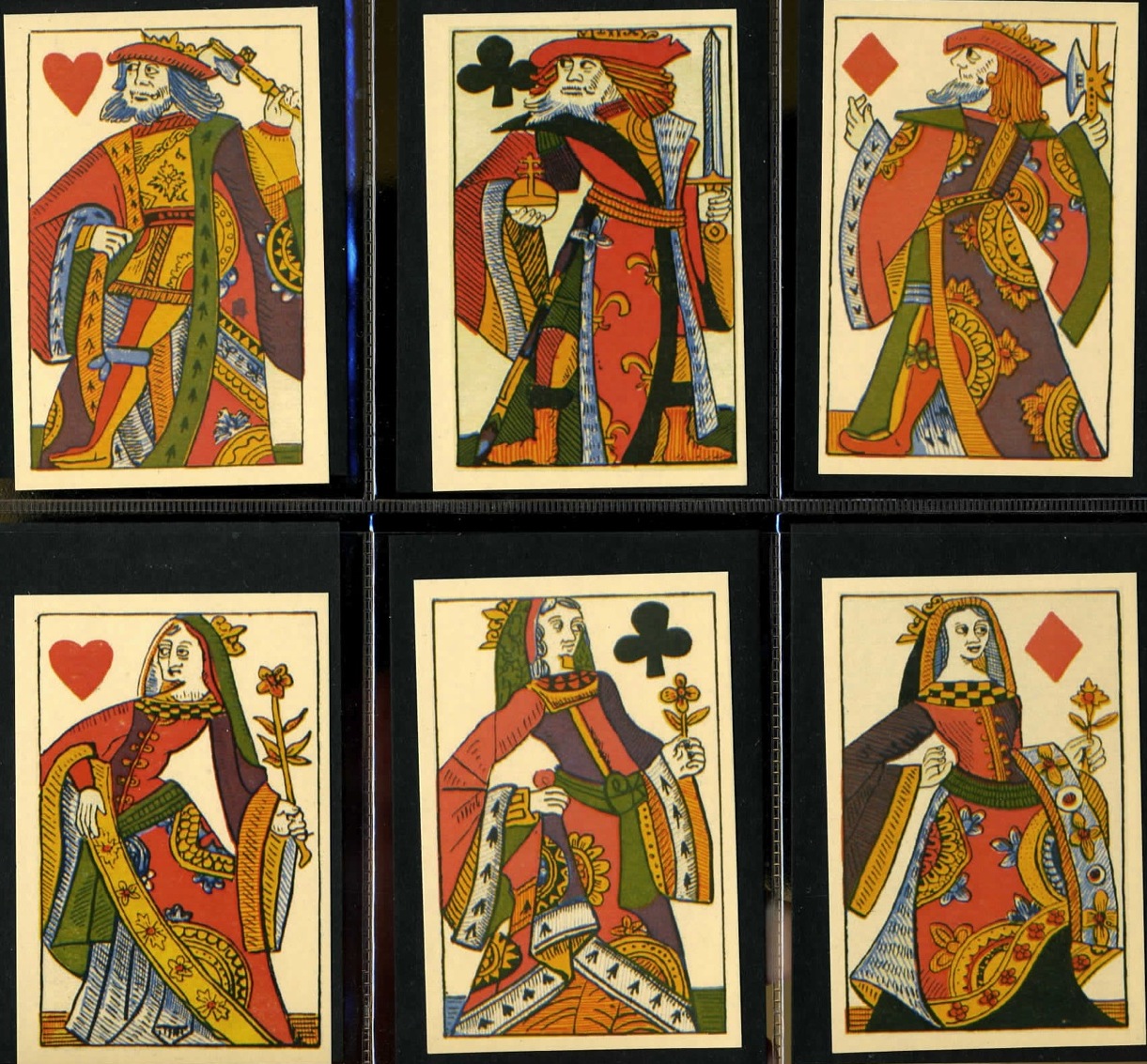
Above: These figures are basically the same as our modern double-ended courts.
In the 17th century there were indigenous English card-makers, but again few of their cards have survived. Here are a few from Paul Bostock's website (below), c.1680.
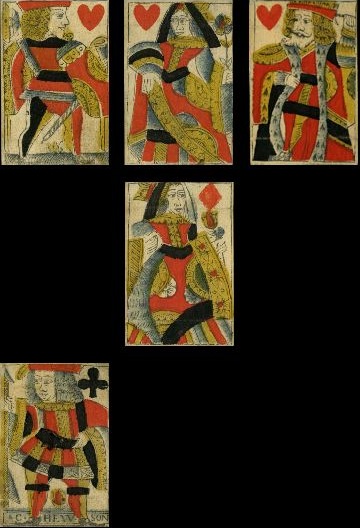
By the 18th century more examples survive and the stocky, distorted figures of the court set develop into a style that is peculiarly English. The Blanchard pack below (c.1770) is from the late Sylvia Mann's collection.
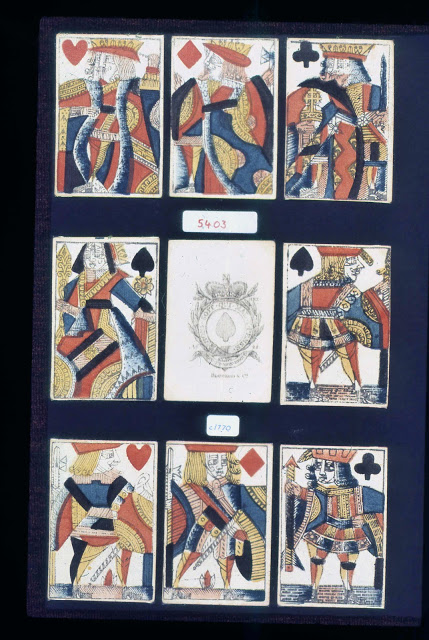
The tax on playing cards became higher and higher, especially towards the end of the 18th century and into the early 19th, partly to help pay for the war against Napoleon. So a number of fake ASs were produced to avoid the taxation, as in the pack below.
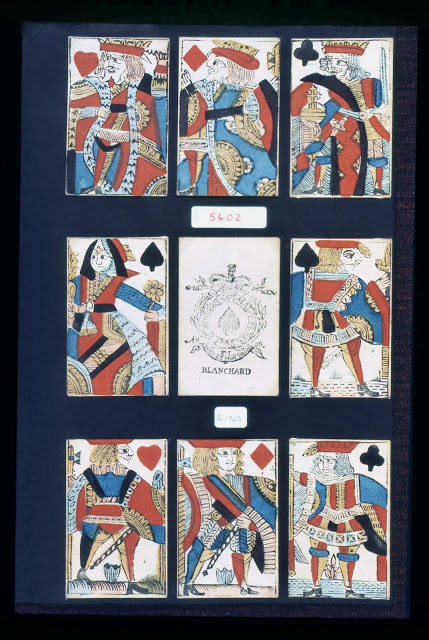
Above: Blanchard courts of the style used c.1760 with a fake Garter AS, probably by Harding, c.1805. [From Sylvia Mann's collection. These pictures are of poorer quality, as they are taken from old slides.)
In 1832 Thomas de la Rue revolutionized the method of printing cards. Until then, and beyond, cards were made from the impress of wood-blocks (usually apple or pear wood) and then the colours were stencilled by hand. Packs were also assembled by hand. De la Rue used letterpress to produce his cards and slowly but surely during the first half of the 19th century the new method took over.
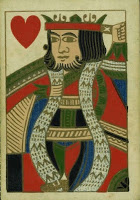
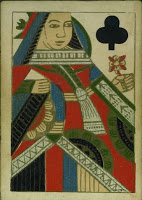
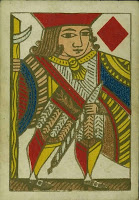
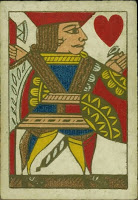
Above: Courts by De La Rue, illuminated with gold, c.1832-35. This has mixed courts, as far as the colouration is concerned, as some of them have green added, as on the KH and QC.
Double-ending was relatively late in coming to Britain, some time around 1850, but again change was fairly slow, so single-ended cards were in favour for quite a long time after that, certainly into the 1880s. (For further details, see page 33.)
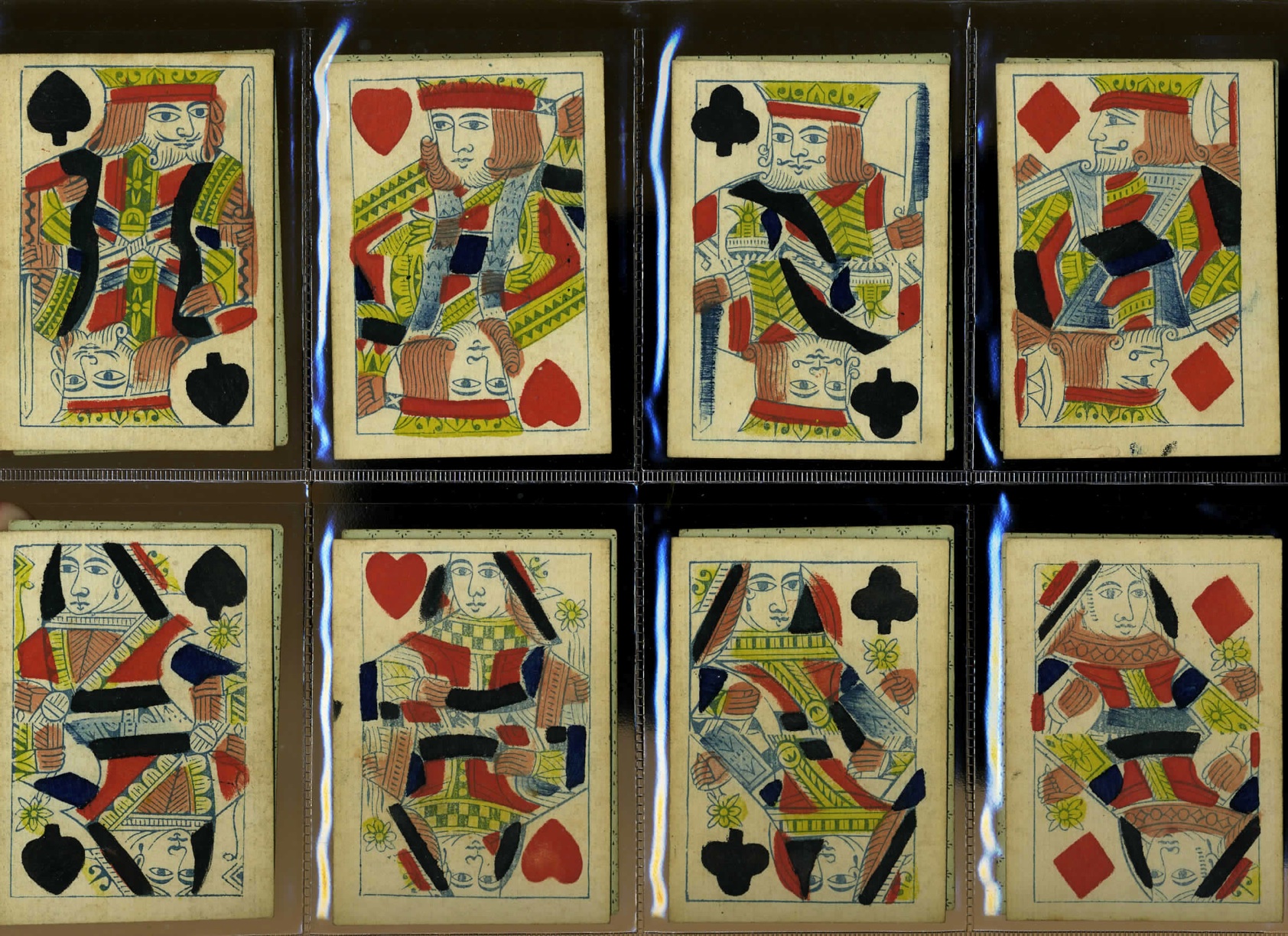
Above: Double-ended cards made by the traditional wood-block method by Woolley, c.1850:
Other early examples from Goodall (c.1855) and De La Rue (c.1855):
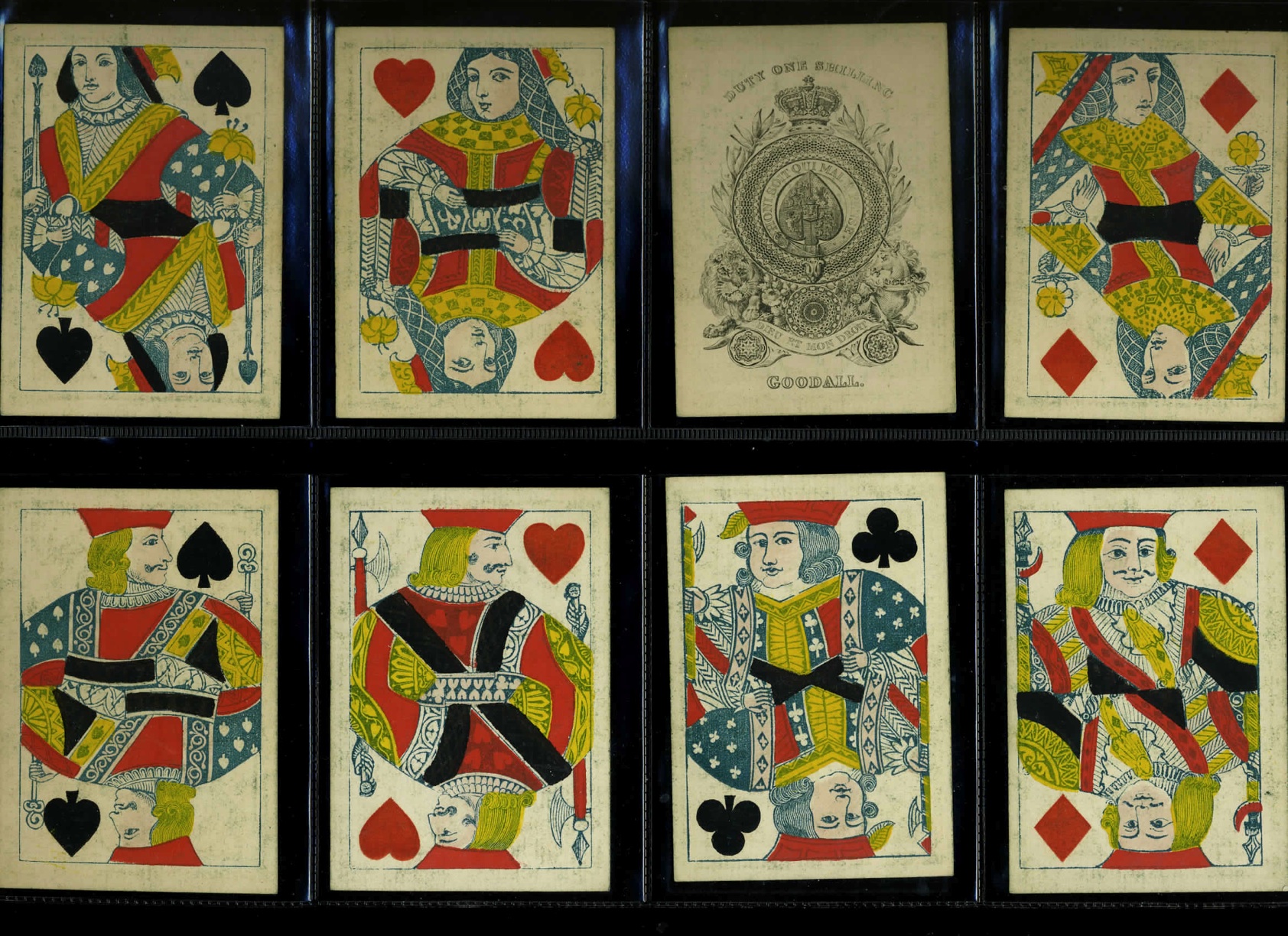
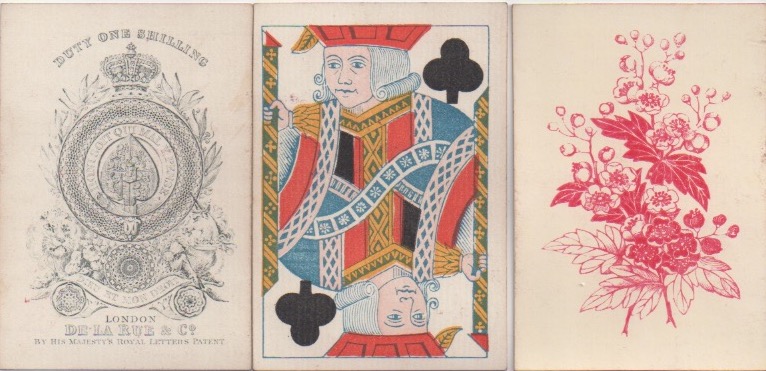
By this time the backs of playing cards were beginning to be decorated with marvellous designs, such as those of Owen Jones.
By the 20th century most of the features of our present-day cards are recognizable, though before World War I the standard size was still wide (as in American poker cards) and the figures took up quite a large area of the card. I give a few examples to bring us up to date.
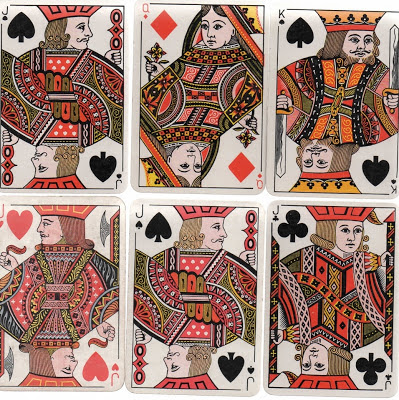
Above: De La Rue cards in three colours only from c.1895-1905 (small indices) and c.1910 (larger indices).
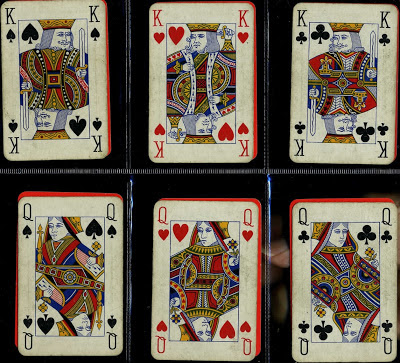
Above: Mardon, Son & Hall (a division of Imperial Tobacco), made in their millions for the Wills exchange scheme, 1933-34.
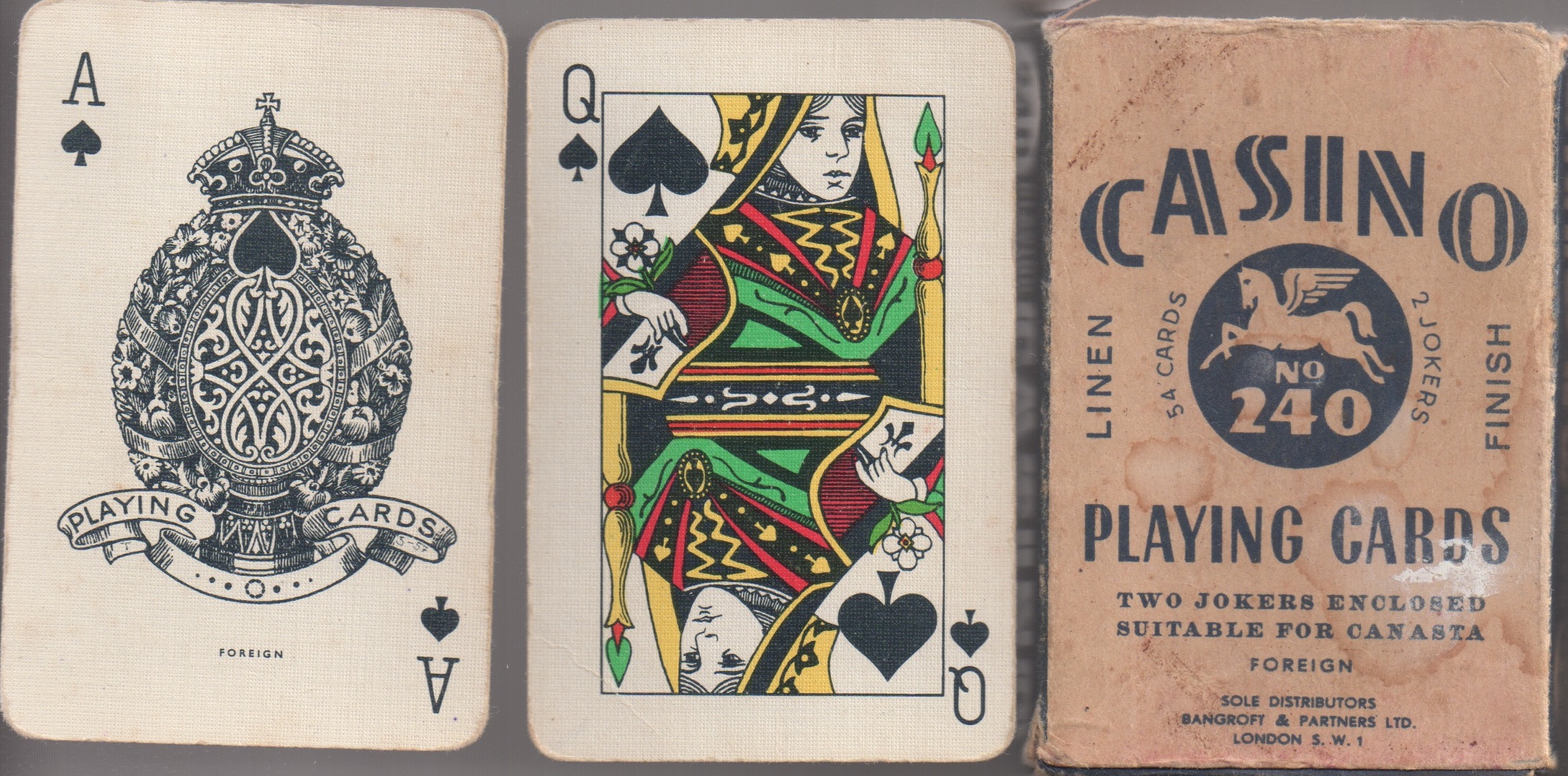
Above: Obchodni Tiskarny Karty (OTK), Prague, c.1957, imported into Britain and marketed as Casino. The plates are touched up versions of those of Piatnik, Prague, from the 1930s.
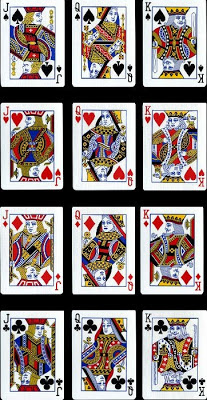
Above: Modern American poker cards. The design has its origins back in the early 1900s, but is now used by the United States Playing Card Co (USPCC) for most of its wide-size brands, including those by other subsumed makers such as Andrew Dougherty and the New York Consolidated Card Co. It is also widely copied by other makers, especially those in China.
To give just a little sense of the variety of designs found with the standard English pattern I illustrate 20 different JHs, made from c.1920-70, which represent only a tiny fraction of what is and has been produced
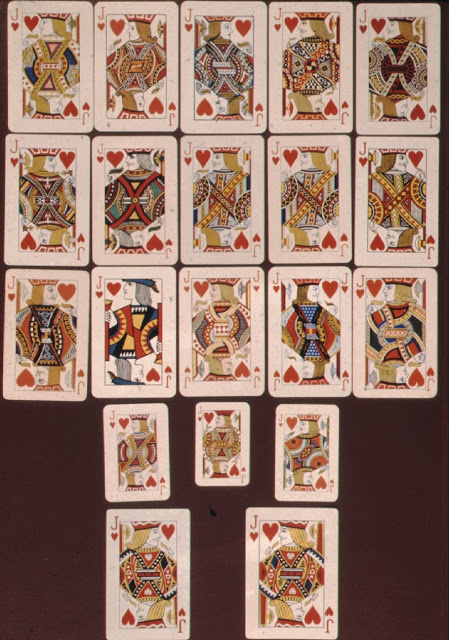
Above: this variation in court card design is what fascinates me.
Also, here's a historical progression of the JS from c.1525-1880; the top row are French c.1525, English c.1670, English c.1770, English c.1810; the bottom row are all American and date from c.1820-1880. They are all from Paul Bostock's website. See also a recent discovery of a JS, possibly from the 1630s, at the bottom of page 2.
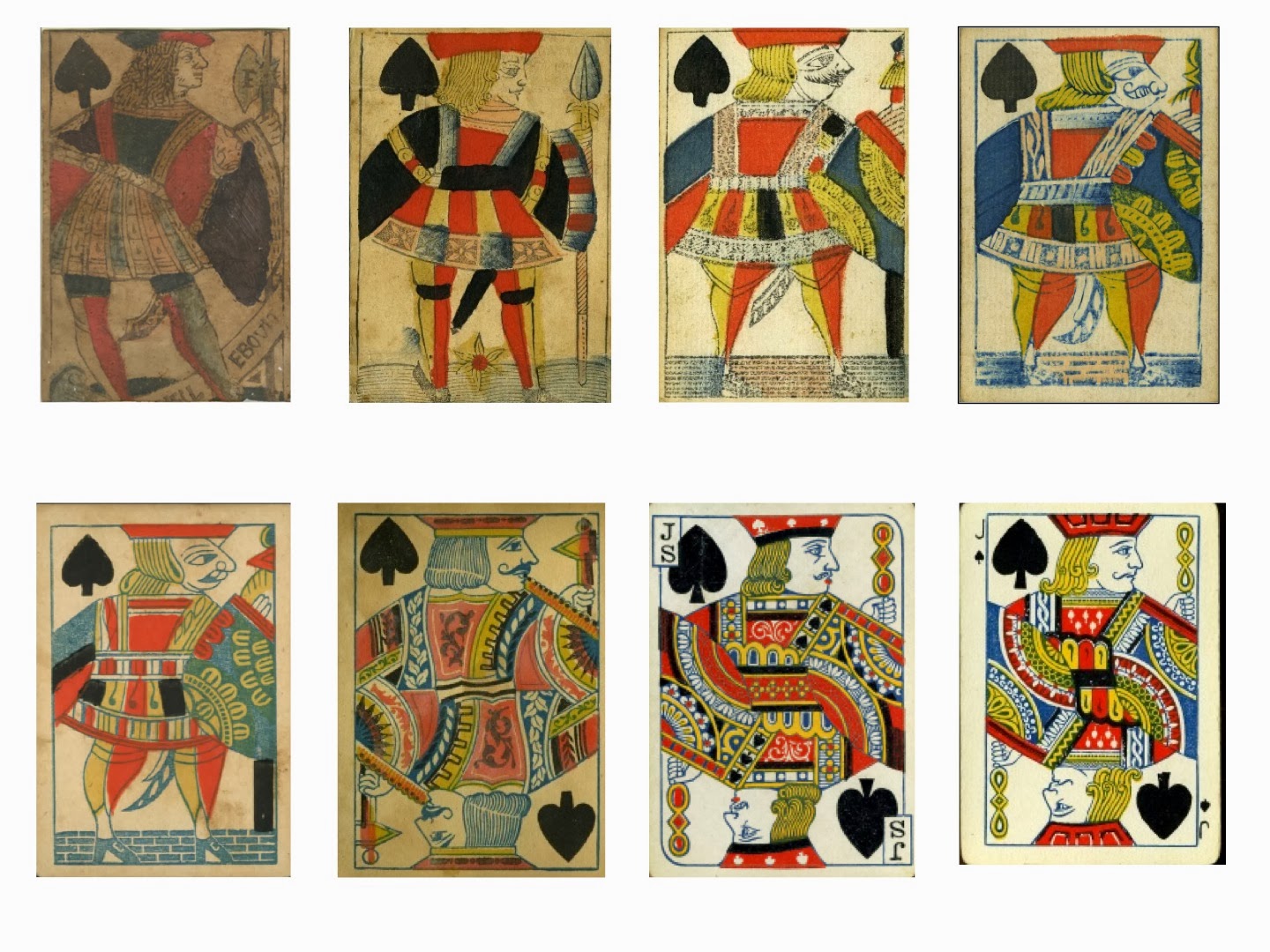
For many examples of early standard English cards, see https://plainbacks.com
See also https://www.i-p-c-s.org
www.endebrock.de/pers-home.html is another interesting site with lots of illustrations and information on tax stamps and duty.
If you want to buy cards, or just have a look at some very nice ones, try https://gamesetal.shop
A site devoted particularly to modern cards with some historical background as well is https://whiteknucklecards.com
Games and their rules are catered for at https://whiteknucklecards.com/games/
And, of course, there's lots more information on rest of the wopc website.
By Ken Lodge
United Kingdom • Member since May 14, 2012 • Contact
I'm Ken Lodge and have been collecting playing cards since I was about eighteen months old (1945). I am also a trained academic, so I can observe and analyze reasonably well. I've applied these analytical techniques over a long period of time to the study of playing cards and have managed to assemble a large amount of information about them, especially those of the standard English pattern. About Ken Lodge →

Related Articles
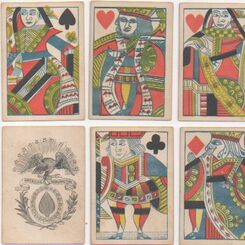
75: Early American cards
An overview of some of the early cards made in the United States.
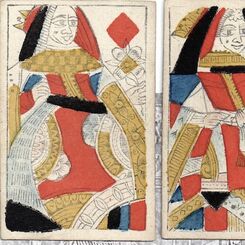
73: Fakes, forgeries and Tax Evasion
When there are oficial taxes to pay, people will find a way to avoid paying them - often illegally. ...
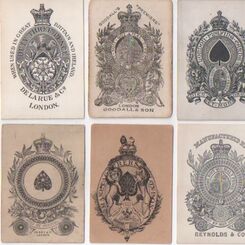
72: The Ace of Spades
In standard English packs the Ace of Spades is associated with decorative designs. This is a histori...
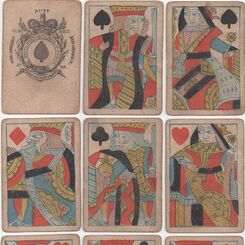
71: Woodblock and stencil: the hearts
A presentation of the main characteristics of the wood-block courts of the heart suit.
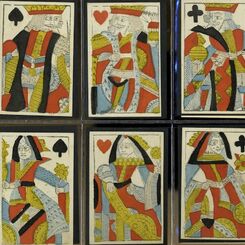
70: Woodblock and stencil : the spade courts
This is a presentation in a more straight forward fashion of the work done by Paul Bostock and me in...
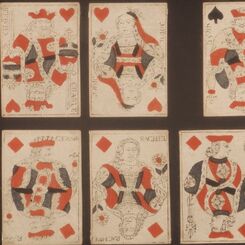
64: The descendants of the French regional patterns: 2
A continuation oF the development of the off-spring of the Paris patterns and a few examples of how ...
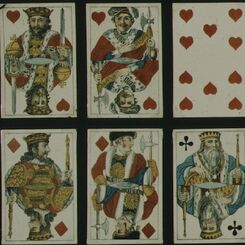
63: The descendants of the French regional patterns: 1
A great many regional patterns were exported from France and subsequently copied elsewhere. Some of ...
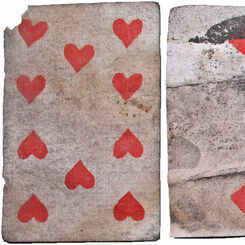
Archaeological find: old playing cards under the floorboards
The municipal archaeological service in Dordrecht (Netherlands) recently found some antique playing ...
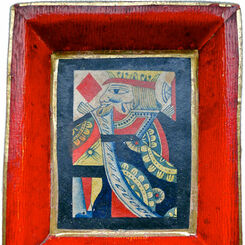
Pope Joan Trays
Some traditional Pope Joan boards comprise a circular tray, others are square, divided into sections...
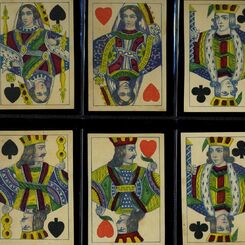
21: Belgian Makers: Brepols and Biermans
Brepols started making playing cards in 1826, although he had been in the printing trade since 1800....
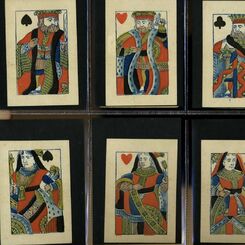
19: 19th Century Breaks with Tradition - Unusual versions of the Standard English Pattern
The centuries-long tradition of English court cards was subject to misinterpretation and in some cas...
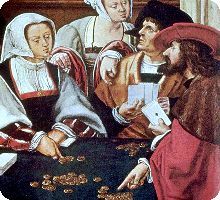
Playing Cards & Gaming
Soon after their first appearance in Europe we hear of playing cards being banned by the authorities...
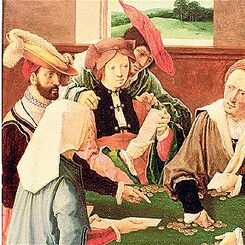
Netherlands
Playing cards have been known in the Low Countries since the 14th century
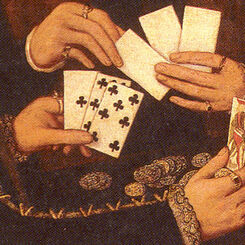
History of Blackjack
Over the years the origin of Blackjack, like many other games, has eluded researchers for a long tim...

History of Online Casinos
Online casinos appeared shortly after the internet became a more mainstream tool for the public to u...
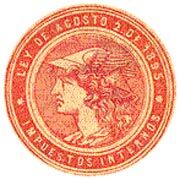
Argentina Tax Stamps on playing cards 1895-1968
Argentina Tax Stamps on playing cards 1895-1968
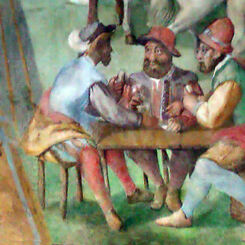
Italian Playing Cards
The first reliable evidence that playing cards were being used in Italy is from 1376, when a game ca...
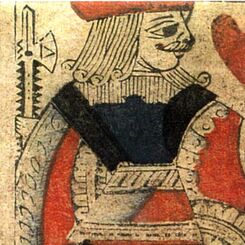
Early English Playing Cards
Early examples of traditional, standard English playing cards of which the best known are those of H...
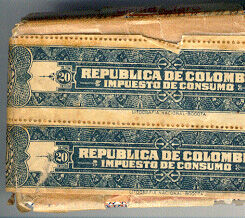
Impuesto de Timbre para Naipes
EL CONGRESO DE COLOMBIA. LEY 69 DE 1946, por la cual se elevan las tarifas de algunos impuestos indi...

History of English Playing Cards & Games
The History of English Playing Cards dates probably from the mid 15th century
Most Popular
Our top articles from the past 60 days






















